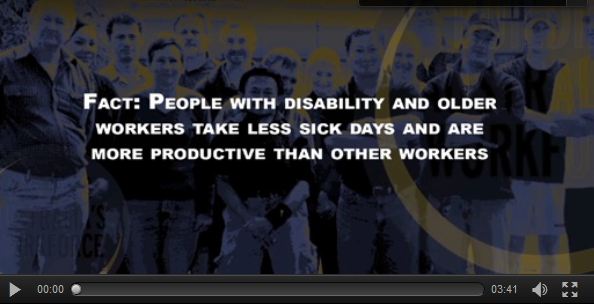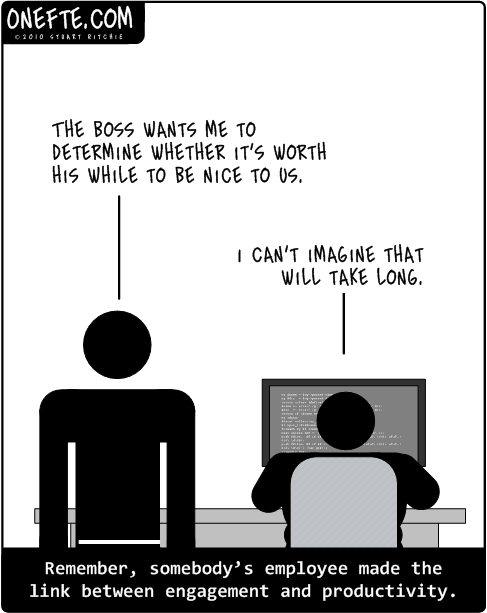Managing Generation Y In The Workplace
Today’s HRwisdom Blog looks at managing Gen Y staff and comes thanks to HRwisdom expert contributor, Robert Watson.
Over to Robert . . .
Weekend papers regularly feature stories about “Generation Y” – the group of people born between about 1979 and 1999.
 Once a group attains a label, it follows that writers compile the quirkiest features of that group and turn it into literary entertainment.
Once a group attains a label, it follows that writers compile the quirkiest features of that group and turn it into literary entertainment.
However, being a business manager you have probably seen some of these people applying for jobs and perhaps you have even employed some and noticed that they are somehow “different” to your regular workers.
So, it will help employers if they can have an understanding of the characteristics of Gen Y.
Gen Y are commonly described as:
- Very confident of themselves
- Impatient
- Quick to learn
- Positive about the future, and
- Spending significant amounts of time socialising using computers and mobile phones (and you thought they were wasting time!).
What if you are recruiting Gen Y people?
Unlike their parents, Gen Y don’t look in the newspaper waiting for job vacancies to appear each Saturday. No, they actively use search engines on the internet to spot advertisements and have them automatically sent by RSS feed to their mobile phones. Gen Y can literally send in their CV one minute after the job ad has been posted.
As an employer, you should be using the internet as your primary method of advertising vacancies.
Having said that, it can be smart to use a two-pronged approach.
First, place a small newspaper ad which shows your company name (brand), the job title, a reference to the more comprehensive internet ad and just enough words to excite Mum and Dad into telling their son or daughter.
Second, your internet ad (or website) should contain details to excite the potential Gen Y applicant:
- Use fresh and bright colour so that your vacancy looks different from the bland text-only ads
- Show photos or a video of your existing employees smiling at work (an informal but free method of recognising your best employees!)
- Talk about growth and exciting future developments because Gen Ys want to see that your business is not stagnant
- Mention technology where appropriate, and
- You still need a basic description of what the work entails, remembering, however, Gen Y will be wanting to see if your workplace looks like an interesting and fun place to be. As an example, do school kids join fast food outlets because they want to cook 1000 burger patties in a shift? No! They join because they want to be part of a fun-loving team of young people.
What if your business already has Gen Ys?
With Gen Y, be aware that their loyalty to anything is often fragile. If they don’t like your workplace, they will leave and then start looking for other work (although we’ll wait and see what impact the global financial downturn has upon this characteristic). In contrast, the older generations would hang on in a lousy job until they had secured another job.
To a large extent, you need to entertain the Gen Ys, and there is a way to do this which will tap into their impatience and their need for fast-paced learning.
Consider setting up a Learning Log which is a plan of all the topics needed to be mastered before a person can be considered for the next position. Although the topics might be broad, the individual sub-topics will be small and very quick to learn. Training policies help plan for such learning.
An Example: A Supermarket Business
Level 1 Check-Out Operation
- Opening the register
- Greeting the customer
- Operating the conveyor, scanning and packing bags
- Transactions – Cash, Credit cards, EFT, Cheque
- Failed scans and Sale items
- Shutdown and Balancing the till
Level 2 Front End Supervision
- All aspects of Check-Out Operation, plus
- Accessing the safe
- Handling returns
- Responsible sale of cigarettes
- Dealing with abusive customers
- Confronting suspected shoplifters
- Emergency evacuation drill coordination
- Rostering of staff.
In the past, a business might train all of these things in a single four hour session of mostly theory.
However, with Gen Y you would use a staged approach, with separate lessons over a period of time. Each mini-lesson would have a small amount of theory, then a walk-through of the appropriate Standard Operating Procedure and, finally, an appropriate number of hours doing the activity under the watchful eye of your most experienced supervisor.
Short, sharp lessons building up towards the end point makes for a program which engages the Gen Y employee.
The Bottom Line:
Rather than shaking your head in frustration at Gen Ys, your challenge is to tap into their many strengths so that your business can ride the fast wave into the future.
HRwisdom








